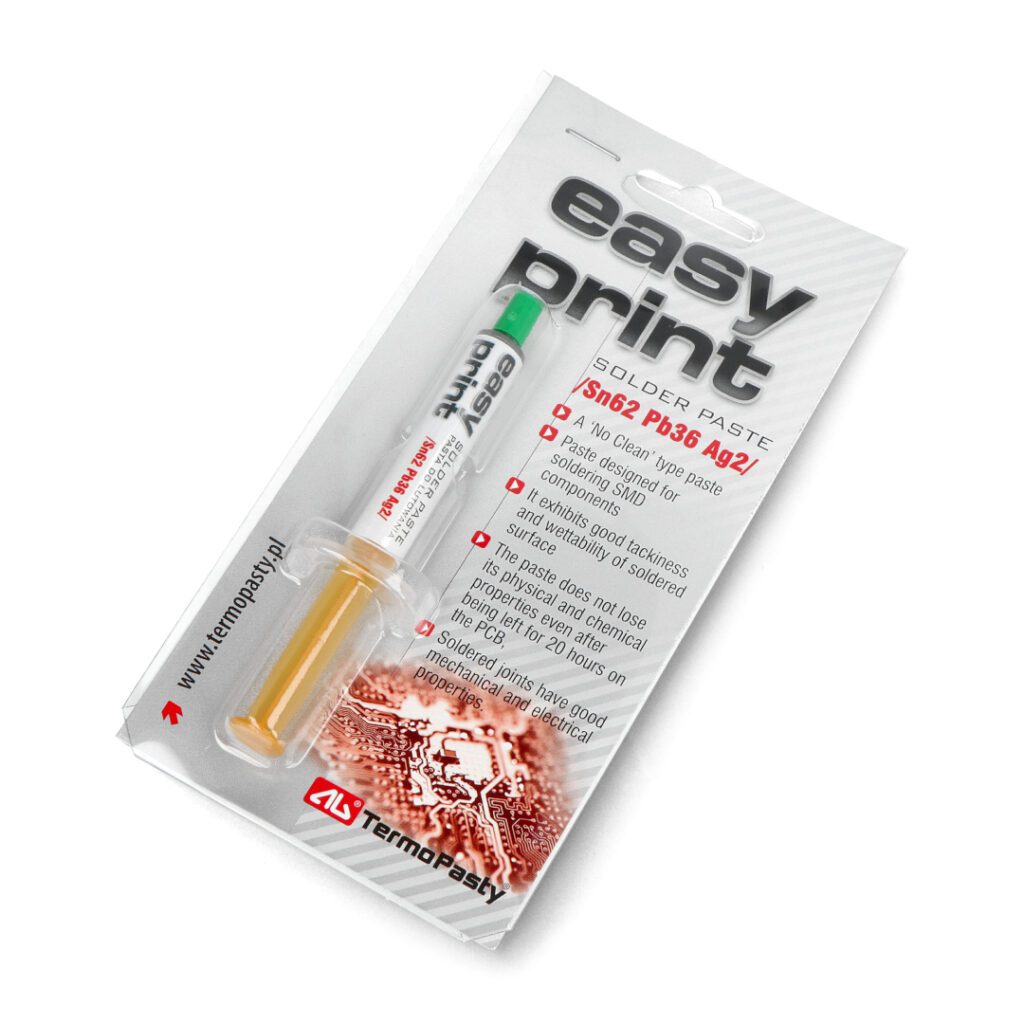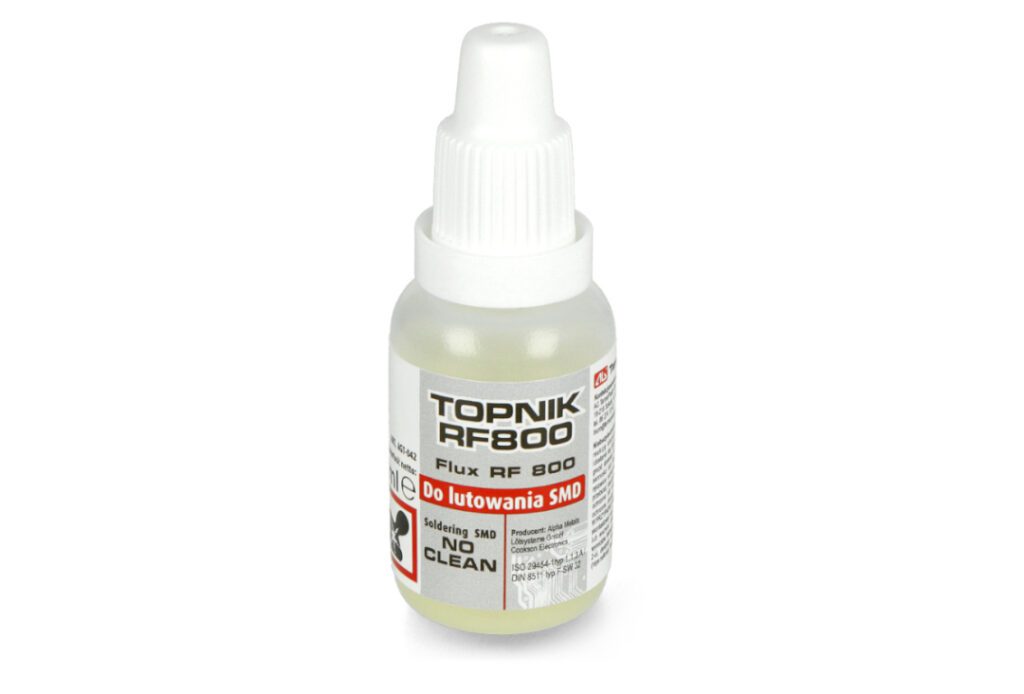Table of Contents:
Smooth, uniform consistency – not too dry and runny. Uniform color. No visible admixtures or air bubbles. Post-process cleanliness. The quality of solder paste is crucial to the soldering process, and it is difficult to overestimate this aspect. Today a little practical information for adepts of soldering and those who want to deepen their knowledge.
Safe soldering
The high temperatures used during
soldering
can pose a health risk. The safeguards that first come to mind are not just gloves or fireproof clothing. We are by no means promoting lax practices, but a horse’s row to the one who always uses all the protective accessories you can think of, which, by the way, are plentiful on the market. Equally important when soldering in a home workshop turn out to be anti-static grips and cleaning accessories that guarantee aesthetic, durable connections between electronic components. The right accessories also help minimize waste, and by using eco-friendly solders and reusable accessories, we contribute to environmental protection. Finally, using accessories in accordance with the soldering tool manufacturer’s recommendations ensures that the warranty is maintained and that the tools last a long time. And where does solder paste fit into all this?
Solder paste - liquid tin in soldering
Solder paste
, also known by the circulating term solder flux, is a special material used during the soldering process. Its main purpose is to facilitate the flow of solder, which is a metal alloy used to join electronic components on
printed circuit boards
, wires and other surfaces.
It contains chemicals that help remove layers of oxidation often found on metal surfaces of electronic components and soldering tips. Oxidation This oxidation is commonly observed in everyday life and has many significant implications in chemistry, biology, metallurgy and many other scientific fields.
This is a chemical process in which a substance reacts with oxygen or other chemicals, leading to a change in its chemical and physical properties, and in the case of soldering, leads to impediments to the flow of solder, which in turn leads to weak joints.
Substances contained in solder pastes also reduce the surface tension of the metal, which contributes to better adhesion of the solder to electronic components. It is recommended especially for delicate components, and although for simple applications or amateur projects, where very precise soldering is not required and electronic components are resistant to oxidation, solder paste can be dispensed with, after all, regardless of the level of sophistication, we require durable, reliable and adherent connections. Thus, the paste should form a sticky consistency that will prevent components from moving once placed on the printed circuit board (PCB) during soldering and SMT surface mounting.
Properties and composition of solder pastes
Solder paste
can consist of different alloys. The main distinction, about which more below, is between tin-lead alloy combinations and lead-free alloys. Both types of alloys consist mainly of tin, which is well known to soldering adepts and has a low melting point and high tensile and shear strength. Additional metals are sometimes added mainly to further alter the mechanical properties of the alloy.
Lead, for example, lowers the overall melting point and forms strong bonds with other metals such as copper and aluminum, which are often used for PCB pads or component leads. These benefits are the reason why a significant percentage of solder paste alloys use this base. However, lead is considered both a health and environmental hazard, so the industry has begun to move toward manufacturing products that use safer materials.
This has led to the emergence of lead-free alternatives, the most popular of which is a combination of tin, silver and copper. It consists mainly of tin, with silver and copper added to increase strength and lower the melting point to improve alloy properties. Copper lowers the melting point of the alloy and helps wet the molten solder, while silver increases mechanical strength but is less ductile than lead. Others include antimony, bismuth, indium or nickel. It is important to be aware of any interactions the chosen alloy may have with the base metals it joins, as this affects the safety of the metal joint.
Flux
Flux
is a well-known material in metallurgy that is a key ingredient in metal bonding and extractive metallurgy. Fluxes act as stabilizers, a flow agent and/or a chemical cleaning agent. In solder paste, the main task of flux is to act as a cleaner, or reducing agent.
Its main task is to prepare the surface of the metal by removing oxides and impurities. All this prevents oxidation of the surface of the metal and the bonding material and helps to wet the molten metal, and we already know that wetting is important for solder paste, because it reduces the surface tension of the molten metal and allows easier flow during the soldering process.
Solder paste in SMT soldering
We associate surface mount assembly mainly with the fast and reliable manufacturing process of
PCBs
. It is difficult to talk about him without the heroine of today’s article. The base materials for this process include not only surface mount components and circuit boards, but also solder pastes and their proper placement. This includes applying the paste in the printing system, placing the stencil correctly, configuring the inspection programs, setting up the components (automated pick-and-place) and making sure the correct reflow profile is selected.
If there are defects in the solder paste or improper application, it means inevitable problems in production, including but not limited to unexpected rework, delays and costs. Common ones are lumps of solder paste deposited next to the pads after the stencil is printed, contamination on the stencil, poor support, solder paste deposition between two different pads, causing the two pads to merge, and small incomplete paste deposits on the pads.
Solder paste - storage
…something we often downplay. Solder paste is made of a suspension of solder powder and flux. The function of the flux is to remove oxides from parts of the circuit board, component leads and solder powder. This usually happens during reflow, but also occurs in “overtime” during storage. The interaction between flux and solder powder is the main factor affecting the expiration date of solder paste.
In general, storing paste at refrigeration temperature is recommended for long-term storage, as this slows down those unwanted interactions that can occur between flux and solder powder. Some solder pastes are stable at room temperatures, so it is important to read the manufacturer’s recommended storage conditions. Before use, solder paste is often stored in the refrigerator and then brought to room temperature. After this step, the paste can be stored at room temperature or put back in the refrigerator the same day.
How useful was this post?
Click on a star to rate it!
Average rating 0 / 5. Vote count: 0
No votes so far! Be the first to rate this post.





















